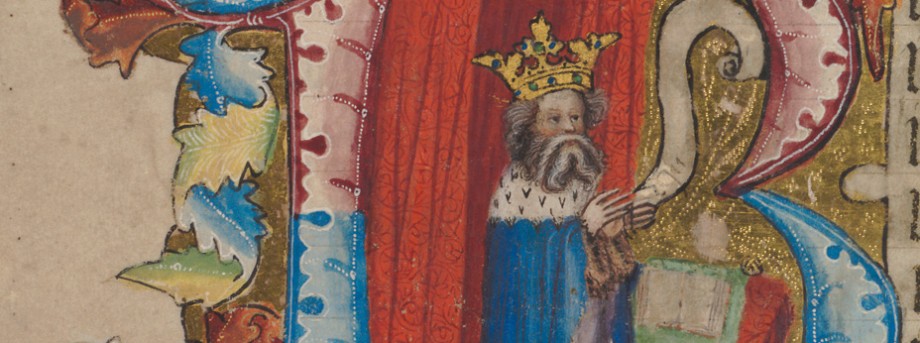The University of Nottingham
 Exchange online
Exchange online
Research Exchange
Institute for Medieval Research celebrates quarter century

The University’s oldest research institute celebrates its quarter century this year, marking 25 years at the forefront of global medieval research.
From its very beginnings the Institute for Medieval Research (originally known as the Institute for Medieval Studies) looked outside of the usual academic schools to foster collaborations. Academics teamed up with archivists and authors to explore not just the medieval period, but the impact that the politics, culture, religion and ideals of the age still influence us today.
Outgoing director of the Institute Dr Christina Lee describes its make up. “We are historians, archaeologists, linguists, theologians, philosophers, art historians, name studies scholars, architectural scholars, Viking specialists, musicologists and paleographers,” she said. “And some of us look at runes.”
In one of the IMR’s key current research projects, Dr Naomi Sykes — a lecturer in zooarchaeology — is addressing the very modern problem of food security. The AHRC-funded Fallow Deer Project has shown that the fallow deer, which is native to a small area of Turkey, has spread across Europe over a number of centuries. The project, which comprises staff and students from the IMR as well as from the humanities and sciences across the wider University, has shown that modern deer populations are a legacy of the medieval period — in particular, the hunting culture of the medieval elite.
This hunting culture also saw off the deers’ top predators — wolves, bears and lynx. Now, fallow deer populations are hitting unsustainable levels. IMR members are collaborating with the National Trust, providing them with the Fallow Deer Project results. These will be used to help the public understand the cultural history of the species, as well as the benefits of eating venison produced through sustainable deer management.
Perhaps more classically ‘medieval’, the Wollaton Antiphonal project is one of the highlights of the IMR’s illustrious history. Led by Emeritus Professor Thorlac Petre-Turville, the project saw the cataloguing and full digitisation of the stunning family service book of Sir Thomas Chaworth of Wiverton Hall, in a collaboration between the IMR and the University’s Manuscripts and Special Collections department. The Wollaton Antiphonal dates back to the first half of the 15th century and has been in the care of the University since 1974.
Before the project, academic access to the Antiphonal was seriously limited due to the fragile nature of the pages. Now the book is available for everyone to view in full on the University’s website.
Modern technologies examining medieval phenomena also feature in the work of historian Dr Conor Kostick. He’s examining the medieval climate, 400-1,000 CE, correlating historical sources with natural data obtained from tree rings and ice cores.
“The availability of new forms of scientific data means that we can look at our historical sources afresh,” said Dr Kostick. “A report, for example, in an Irish annal that in the terrible winter of 700 CE the sea between Britain and Ireland froze becomes altogether more credible when we see evidence for massive Icelandic volcanic activity at that time.”
Dr Kostick also believes that dust plumes, like those seen in the NASA satellite image of the Atlantic Ocean above, could be responsible for the seemingly fantastic ‘rains of blood’ reported in sources from the age.
Other questions posed by this research include whether there was a medieval warm period, and whether environmental factors were a consideration in the origins of the Viking era.
The IMR celebrates its 25th anniversary with a day-long public event in June — see P23 for more details. The event will span the medieval period and showcase the Institute’s research, giving the public the opprtunity to find out more about its work, as well as the chance to meet current and former Institute members.
“As the outgoing Director of the Institute for Medieval Research I can say that I’ve had a wonderful time. There is nothing I would rather be than a medievalist at Nottingham,” Dr Lee said.
“The energy and intellectual curiosity in evidence here will take the Institute through another 25 years.”
Leave a Reply
Other

Top prize for quantum physicist
A University of Nottingham physicist has won a prestigious medal from the Institute of Physics for […]

Zero carbon HOUSE designed and built by students comes home
Design and construct a low cost, zero carbon, family starter home, transport it to Spain, build […]